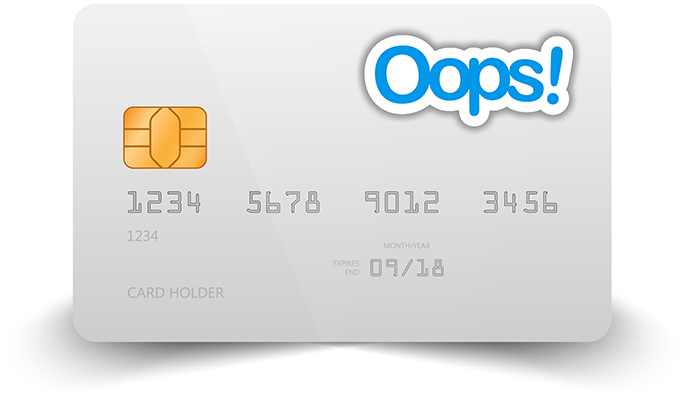Many of us learn at a young age to apologize when we goof up. The apology is as much an opportunity for us to save a relationship as it is a chance to look inward and develop preventive measures we can use the next time we’re heading into a similar situation.
The apology affords companies the same opportunities. It’s a high-impact way for them to demonstrate accountability, de-escalate customers’ emotional responses, and even prevent litigation.
Apologizing is an art, especially when it’s on behalf of an organization. Let’s take a look at how to develop an apology and avoid making common mistakes. We’ll also check out an apology that left customers with a smile.

Hone your tone
Make the message meet the moment. For example, if a utility company were to accidentally cause 500,000 of its customers to go without power in their homes for a week, it would be unwise to send those customers a witty apology loaded with zingers like: Watt went wrong? We’re as shocked as you are!
Apologizing is one of those times when if you have to ask, the answer is yes. Is this too funny, given the fact that we left half a million people without power in their homes for a week? Yes.
But when a mistake isn’t catastrophic — and isn’t actually harmful at all — it’s fine to show some personality or self-deprecating humor in the course of patching things up with customers. Making too big of a deal out of a small, benign mistake is just as bad as taking a flippant tone when apologizing for a major issue.
Not every mistake is life or death; but each mistake is a chance to prove you’re conscientious and value your customers.
You can find plenty of examples out there if you’re looking for a sterile non-apology that shows you’re only interested going through the motions. The one we’ll review a bit later will show you that an apology can be a strategic communication that delights customers and demonstrates that you care.

Mistakes to avoid
Effective apologies present necessary information in a direct, plainly worded, and conversational way. At the very least, they should say what happened, express remorse, and explain how contact the company. If you’re able to share information about resolution and next steps, then include it. But no matter what, you should do your best to keep the following out of the apology.
Impeaching your credibility
Let’s say your company exists solely to provide data security. One day, your company is responsible for a data breach. The last thing you want to say in an apology is: Keeping your data secure is our top priority. Clearly, it’s not; otherwise, your company would have prevented the breach. That’s what customers will think.
Hiding away
You can’t account for every possible outcome or perception when you apologize to your audience. Some people will have questions. Others will want more information. Make sure your apology provides at least one way for customers to connect with you. Don’t hide yourself away in hopes that the apology will settle the matter for the entire audience.
Couching
Couching, also known as hedging, is when you lead into a thought in a way that you hope will soften the blow to the reader. Instead, couching wastes their time and takes the power away from your apology.
See an example
Couching: We just wanted to write to you today to let you know we messed up.
Direct: We messed up.
Disclaiming
Disclaiming, also known as totally chickening out, is designed to deflect responsibility away from the company. Ultimately, disclaiming makes customers think your business is weak, insincere, and even deceptive.
See an example
Disclaiming: We’re sorry for any inconvenience we may have caused.
Direct: We’re sorry we inconvenienced you.
Getting lost in the weeds
Be as clear and as helpful as possible, but remember that giving too much information confuses and distracts your customers. Focus on their needs first. Accept the fact that they may not care about something that your company feels is important.
See an example
In the weeds: One of our data systems in Anytown, USA, experienced an ID10T error at 3:27 a.m. Pacific, and that caused our email software to send you three duplicate emails on August 13: one at 3:28 a.m., one at 3:30 a.m., and one at 3:34 a.m. Pacific.
In the clear: A technical problem on our end caused us to send you duplicate emails on August 13.
Making empty promises
Stick to the facts. Saying the mistake will never happen again is ridiculous. It will happen again or a similar one will pop up. The customer won’t know, or care about, the difference between the two issues. If you’ve resolved the problem, just say that.
See an example
Empty promise: We discovered a problem with our payment system. We’ve fixed the issue, and it will never happen again.
Reasonable assurance: We discovered a problem with our payment system. We’ve fixed the issue.

The biggest mistake
What’s the biggest mistake your company can make when it’s time to apologize? Not having a process in place. If your organization doesn’t have one that people can follow consistently, then you’re putting your business at risk.
Why is this such a big deal? Because the need to apologize introduces unexpected change — and the change could be big and fast-moving, which only makes matters worse. Governance prevents change from disrupting your operations. In this case, it enables your organization to handle most apology-worthy situations in predictable, repeatable ways. Here are some quick thoughts to help you start.
When and how to apologize
These are critically important parts of your process. When should you apologize? Do you reach out to customers any time something goes wrong? Do you set a threshold where you apologize only if your mistake affects more than 1,000 customers? If you find an issue, do you wait for customers to complain or do you say something proactively?
First, set your policy for when, and then document the how. For example, you decide that your organization will apologize to impacted customers any time the company makes a mistake (when). Next, you establish a rule that says you’ll use the channel in which you made your mistake (how). For example, if you were to send customers an email that contained inaccurate information, you’d email an apology to that same audience.

A real-world example
A health and wellness marketer once asked me to write an apology that would address a minor issue with a campaign they led. The campaign’s purpose was to entice people to visit a doctor for a preventive screening — a blood-pressure check, for example. It involved a mailer that offered a gift card as an incentive for completing the targeted care visit.
A third-party print vendor used a master template for the mailer and flowed the name of the preventive screening into it dynamically. The rest of the content was static, including deadline for participation, instructions for sending in proof of the exam to get the gift card, and so on.
A mailer that focused on getting a mammogram (an x-ray image of the breast to help detect cancer) would pull the word mammogram into each fill-in-the-blank in the template. A mailer that focused on getting a dilated retinal exam (checking the eyes for diabetic retinopathy and other conditions) would be exactly the same as the mammogram mailer, but it would instead show the phrase dilated retinal exam in each fill-in-the-blank in the template.
Unfortunately, a data problem at the printing facility caused the phrase dilated retinal exam to appear in one of the fill-in-the-blank spots in a mailer that targeted mammograms. Now, is that the end of the world? No. Is it a catastrophic mistake that requires legal counsel and public relations to get involved? No.
Most, if not all, would see mammogram over and over again on the mailer and understand that the incentive was tied to getting a mammogram. They would know that the mention of the retinal exam was made in error. But any mistake is a potential hit to the company’s credibility and customer trust. The company rightly took responsibility for the mistake and issued an apology.
The apology
Get a mammogram. Get a gift card.
It was really supposed to be that simple. But it turns out we made a mistake in the directions we sent you for claiming your gift card.
The second instruction said to send in your dilated retinal exam information. That doesn’t make sense because we’re talking about mammograms — not eye tests.
It should’ve said send in your mammogram information instead. We’re sorry for the confusion we caused.
You get the mammogram and the gift card. We’ll get the eye exam so we can catch mistakes like this sooner.
If you have questions, please call us at 000-000-0000.
Sincerely,
The Health and Wellness Group
What makes this apology effective? The communication:
- Tells the customer about the failure and shows the company accepts responsibility for it.
- Acknowledges the mistake openly and honestly, and it expresses regret authentically.
- Shows the company understands that its customers value and expect accurate information.
- Expresses personality by poking fun at the company for making a totally avoidable mistake.
- Closes with humor to further defuse the situation and reinforce the original marketing message in a friendly way.
- Gives customers a way to contact the company if they have questions or concerns.
Most importantly, it’s more memorable than the mistake. We’ll close this discussion below with why that matters so much.

Make it memorable
The best apology is one that’s more memorable than the mistake. A memorable apology doesn’t erase the problem or cause customers to forget it. In the short term, an apology that outshines its cause will persuade customers to focus on your transparency and how well you’re handling the situation. In the long term, it will influence their perception of your brand.
If you have questions or would like more information, please contact me.

